Related Research Articles

Mercury is the smallest planet in the Solar System and the closest to the Sun. Its orbit around the Sun takes 87.97 Earth days, the shortest of all the Sun's planets. It is named after the Roman god Mercurius (Mercury), god of commerce, messenger of the gods, and mediator between gods and mortals, corresponding to the Greek god Hermes (Ἑρμῆς). Like Venus, Mercury orbits the Sun within Earth's orbit as an inferior planet, and its apparent distance from the Sun as viewed from Earth never exceeds 28°. This proximity to the Sun means the planet can only be seen near the western horizon after sunset or the eastern horizon before sunrise, usually in twilight. At this time, it may appear as a bright star-like object, but is more difficult to observe than Venus. From Earth, the planet telescopically displays the complete range of phases, similar to Venus and the Moon, which recurs over its synodic period of approximately 116 days.
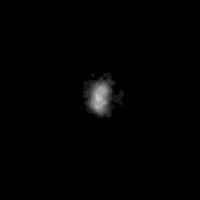
Nereid, or Neptune II, is the third-largest moon of Neptune. Of all known moons in the Solar System, it has the most eccentric orbit. It was the second moon of Neptune to be discovered, by Gerard Kuiper in 1949.

Venus is the second planet from the Sun. It is named after the Roman goddess of love and beauty. As the brightest natural object in Earth's night sky after the Moon, Venus can cast shadows and can be visible to the naked eye in broad daylight. Venus lies within Earth's orbit, and so never appears to venture far from the Sun, either setting in the west just after dusk or rising in the east a little while before dawn. Venus orbits the Sun every 224.7 Earth days. It has a synodic day length of 117 Earth days and a sidereal rotation period of 243 Earth days. As a consequence, it takes longer to rotate about its axis than any other planet in the Solar System, and does so in the opposite direction to all but Uranus. This means the Sun rises in the west and sets in the east. Venus does not have any moons, a distinction it shares only with Mercury among the planets in the Solar System.

Vulcan was a hypothetical planet that some 19th century astronomers thought existed in an orbit between Mercury and the Sun. Its existence was first proposed by the French mathematician Urbain Le Verrier whose calculations found peculiarities in Mercury's orbit which he thought were the result of gravitational influences of another unknown nearby planet or series of asteroids.

Pluto is a dwarf planet in the Kuiper belt, a ring of bodies beyond the orbit of Neptune. It was the first and the largest Kuiper belt object to be discovered. After Pluto was discovered in 1930, it was declared to be the ninth planet from the Sun. Beginning in the 1990s, its status as a planet was questioned following the discovery of several objects of similar size in the Kuiper belt and the scattered disc, including the dwarf planet Eris. This led the International Astronomical Union (IAU) in 2006 to formally define the term planet—excluding Pluto and reclassifying it as a dwarf planet.

Urbain Jean Joseph Le Verrier FRS (FOR) HFRSE was a French astronomer and mathematician who specialized in celestial mechanics and is best known for predicting the existence and position of Neptune using only mathematics. The calculations were made to explain discrepancies with Uranus's orbit and the laws of Kepler and Newton. Le Verrier sent the coordinates to Johann Gottfried Galle in Berlin, asking him to verify. Galle found Neptune in the same night he received Le Verrier's letter, within 1° of the predicted position. The discovery of Neptune is widely regarded as a dramatic validation of celestial mechanics, and is one of the most remarkable moments of 19th-century science.

Capillary action is the process of a liquid flowing in a narrow space without the assistance of, or even in opposition to, any external forces like gravity. The effect can be seen in the drawing up of liquids between the hairs of a paint-brush, in a thin tube, in porous materials such as paper and plaster, in some non-porous materials such as sand and liquefied carbon fiber, or in a biological cell. It occurs because of intermolecular forces between the liquid and surrounding solid surfaces. If the diameter of the tube is sufficiently small, then the combination of surface tension and adhesive forces between the liquid and container wall act to propel the liquid.

Larissa, also known as Neptune VII, is the fifth-closest inner satellite of Neptune. It is named after Larissa, a lover of Poseidon (Neptune) in Greek mythology and eponymous nymph of the city in Thessaly, Greece.
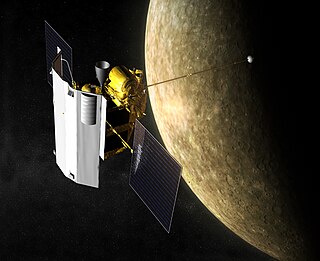
MESSENGER was a NASA robotic space probe that orbited the planet Mercury between 2011 and 2015, studying Mercury's chemical composition, geology, and magnetic field. The name is a backronym for "Mercury Surface, Space Environment, Geochemistry, and Ranging", and a reference to the messenger god Mercury from Roman mythology.

1566 Icarus is a large near-Earth object of the Apollo group and the lowest numbered potentially hazardous asteroid. It has is an extremely eccentric orbit (0.83) and measures approximately 1.4 km (0.87 mi) in diameter. In 1968, it became the first asteroid ever observed by radar. Its orbit brings it closer to the Sun than Mercury and further out than the orbit of Mars, which also makes it a Mercury-, Venus-, and Mars-crossing asteroid. This stony asteroid and relatively fast rotator with a period of 2.27 hours was discovered on 27 June 1949, by German astronomer Walter Baade at the Palomar Observatory in California. It was named after the mythological Icarus.

Reginald Aldworth Daly was a Canadian geologist.
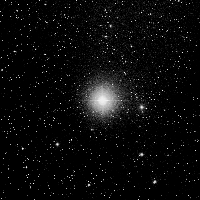
Alpha Andromedae, officially named Alpheratz, is 97 light-years from the Sun and is the brightest star in the constellation of Andromeda when Beta Andromedae undergoes its periodical dimming. Immediately northeast of the constellation of Pegasus, it is the upper left star of the Great Square of Pegasus.

Luíz Cruls or Luís Cruls or Louis Ferdinand Cruls was a Belgian-Brazilian astronomer and geodesist. He was Director of the Brazilian National Observatory from 1881 to 1908, led the commission charged with the survey and selection of a future site for the capital of Brazil in the Central Plateau, and was co-discoverer of the Great Comet of 1882. Cruls was also an active proponent of efforts to accurately measure solar parallax and towards that end led a Brazilian team in their observations of 1882 Transit of Venus in Punta Arenas, Chile.
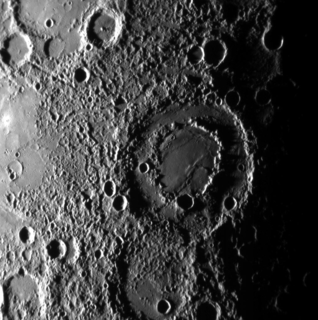
The geology of Mercury is the scientific study of the surface, crust, and interior of the planet Mercury. It emphasizes the composition, structure, history, and physical processes that shape the planet. It is analogous to the field of terrestrial geology. In planetary science, the term geology is used in its broadest sense to mean the study of the solid parts of planets and moons. The term incorporates aspects of geophysics, geochemistry, mineralogy, geodesy, and cartography.

Mercury has a very tenuous and highly variable atmosphere containing hydrogen, helium, oxygen, sodium, calcium, potassium and water vapor, with a combined pressure level of about 10−14 bar. The exospheric species originate either from the Solar wind or from the planetary crust. Solar light pushes the atmospheric gases away from the Sun, creating a comet-like tail behind the planet.

The history of Mars observation is about the recorded history of observation of the planet Mars. Some of the early records of Mars' observation date back to the era of the ancient Egyptian astronomers in the 2nd millennium BCE. Chinese records about the motions of Mars appeared before the founding of the Zhou Dynasty. Detailed observations of the position of Mars were made by Babylonian astronomers who developed arithmetic techniques to predict the future position of the planet. The ancient Greek philosophers and Hellenistic astronomers developed a geocentric model to explain the planet's motions. Measurements of Mars' angular diameter can be found in ancient Greek and Indian texts. In the 16th century, Nicolaus Copernicus proposed a heliocentric model for the Solar System in which the planets follow circular orbits about the Sun. This was revised by Johannes Kepler, yielding an elliptic orbit for Mars that more accurately fitted the observational data.

Debussy is a rayed impact crater on Mercury, which was discovered in 1969 by low resolution ground-based radar observations obtained by the Goldstone Observatory. Later in 1990–2005 it was imaged in more detail by the Arecibo Observatory. The crater was initially known as the feature A. The bright appearance of rays in the radar images indicates that the crater is geologically young, because fresh and rough surfaces of young impact craters are good scatterers of radio waves.
In astronomy a phase curve describes the brightness of a reflecting body as a function of its phase angle. The brightness usually refers the object's absolute magnitude, which, in turn, is its apparent magnitude at a distance of astronomical unit from the Earth and Sun. The phase angle equals the arc subtended by the observer and the sun as measured at the body.
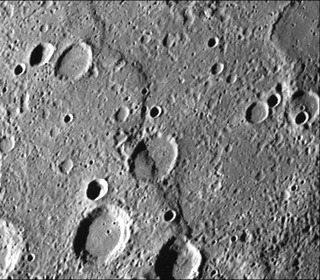
Inter-crater plains on Mercury are a land-form consisting of plains between craters on Mercury.

Project FAMOUS was the first-ever marine scientific exploration by manned submersibles of a diverging tectonic plate boundary on a mid-ocean ridge. It took place between 1971 and 1974, with a multi-national team of scientists concentrating numerous underwater surveys on an area of the Mid-Atlantic Ridge about 700 kilometers west of the Azores. By deploying new methods and specialized equipment, scientists were able to look at the sea floor in far great detail than ever before. The project succeeded in defining the main mechanisms of creation of the median rift valley on the Mid-Atlantic Ridge, and in locating and mapping the zone of oceanic crustal accretion.
References
- ↑ Touchet, Em. (1915). "Societe Astronomique de France. Seance du Mercredi 16 Juin 1915". L'Astronomie. 29: 246–261. Bibcode:1915LAstr..29..246T. See pp. 251–252.
- ↑ de Vaucouleurs, G.; et al. (September 1975). "The new Martian nomenclature of the International Astronomical Union". Icarus. 26 (1): 85−98. Bibcode:1975Icar...26...85D. doi:10.1016/0019-1035(75)90146-3.